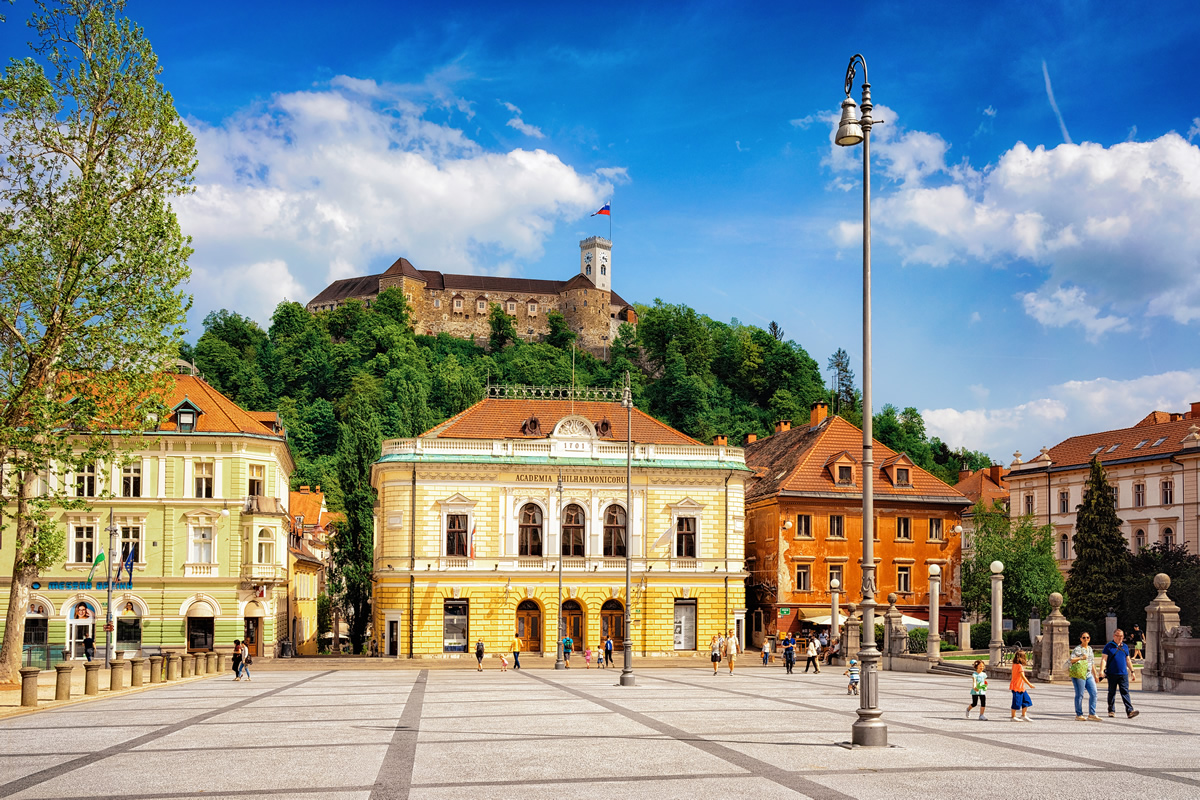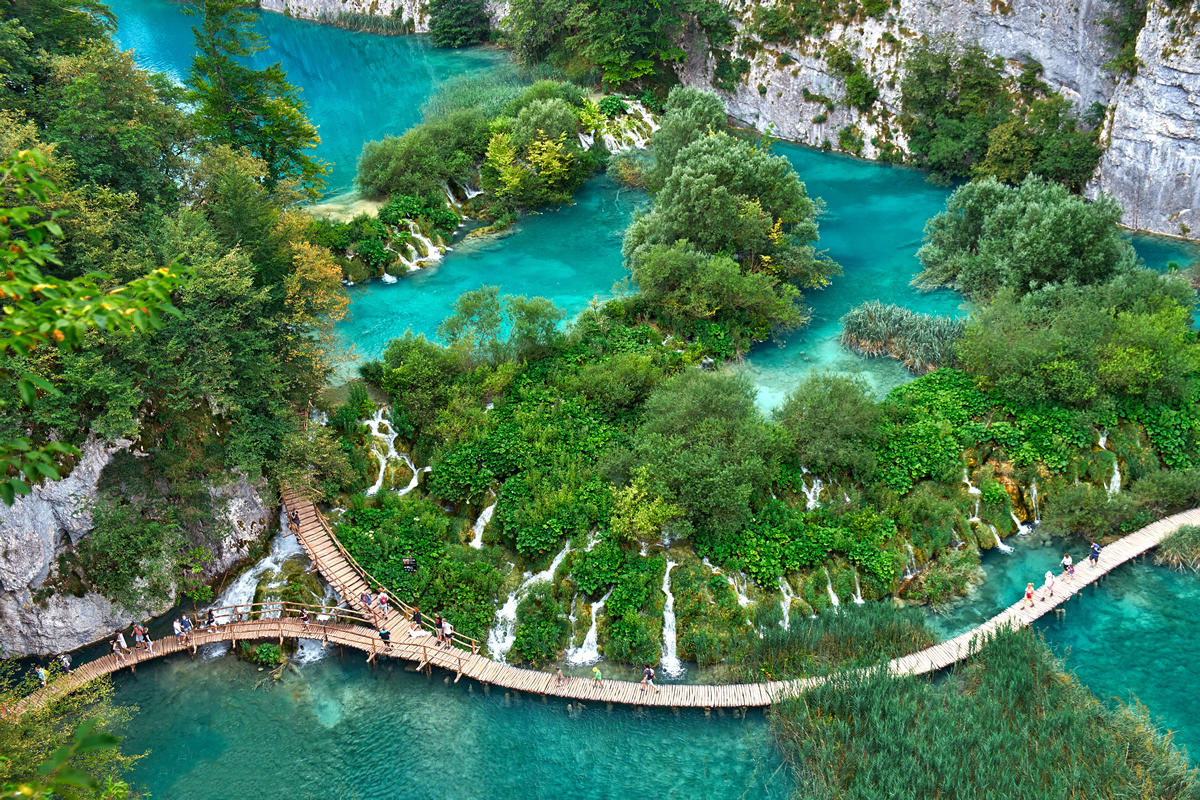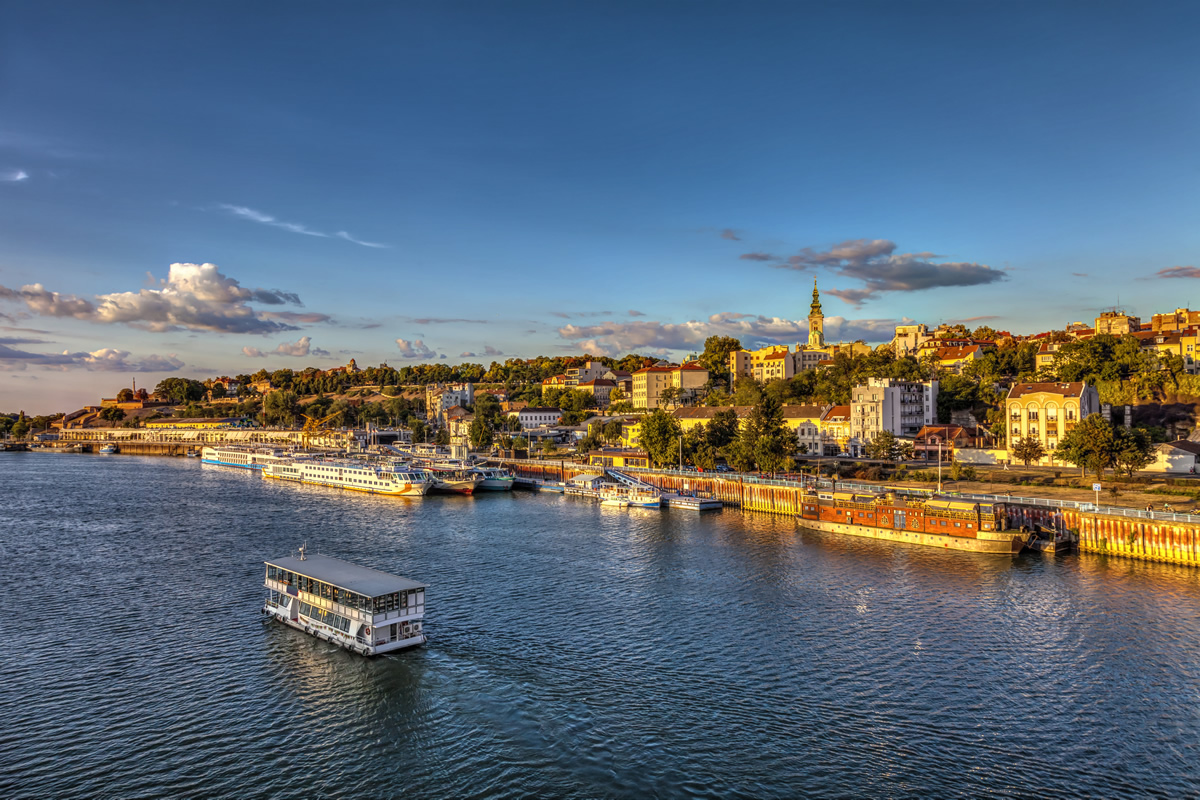Romania
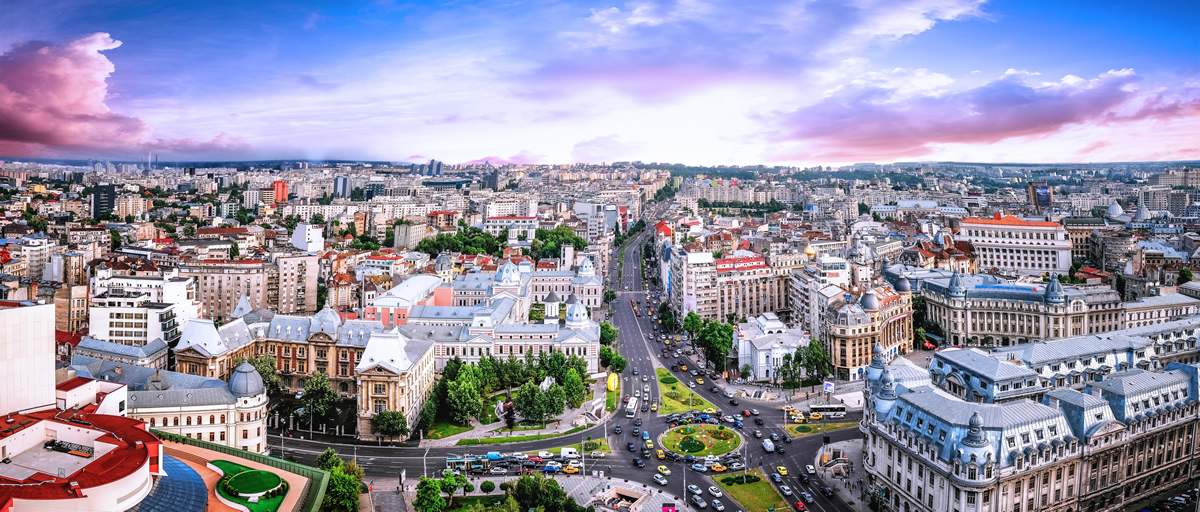
Romania is a dynamic country located at the crossroads of Central, Eastern, and Southeastern Europe, rich in history, arts and scenic beauty. It is known for the forested region of Transylvania, ringed by the Carpathian Mountains. Romania’s preserved medieval towns are famous for its many fortified churches and castles.
Visit Transylvanian to experience history and the vibrant capital Bucharest for a very interesting mix of old and new.
The Carpathian Mountains draw a wide arc through the centre of the country, while Europe’s second-longest river, the Danube, marks Romania’s southern border with Bulgaria. Transylvania, most famous for Dracula, has no shortage of jaw-dropping castles built on rocky hilltops. Visit most known Bran Castle, but don’t overlook beauties such as Corvin Castle or Peleş Castle. In medieval towns like Braşov, Sighişoara and Sibiu stroll their cobbled walkways with charming streetside cafes, while admiring the Gothic and baroque facades.
Romania is a great choice for active travelers. The rocky peaks of Transylvania and Moldavia are snow-capped from mid-October in some years, perfect for winter activities. The Danube Delta is a vast and unique protected wetland, popular for fishing, boating and, especially, birdwatching in spring. In summer, all the action moves to the Black Sea coast, where the warm climate, miles of sand beaches, ancient monuments, vineyards and modern resorts await.
Bucharest
Bucharest is the capital and largest city of Romania located in the southeast of the country on the banks of the Dâmbovița River. It is also Romania’s the cultural, industrial, and financial centre.
Bucharest is a dynamic and energetic city with lots of museums, parks, trendy cafes and drinking gardens. While much of the centre is now modern, the old part of the city shouldn’t be left out on your visit. The main attraction is still the Palace of Parliament, the largest parliament building in the world, formerly named “Casa Poporului” (People’s House). There are not a lot of cities that better embody the clash of East and West. Friendly, loud, and colourful locals will make you feel welcome and entertained. Bucharest has been undergoing major construction and modernization work in recent years and is becoming a more sophisticated, trendy and modern city.
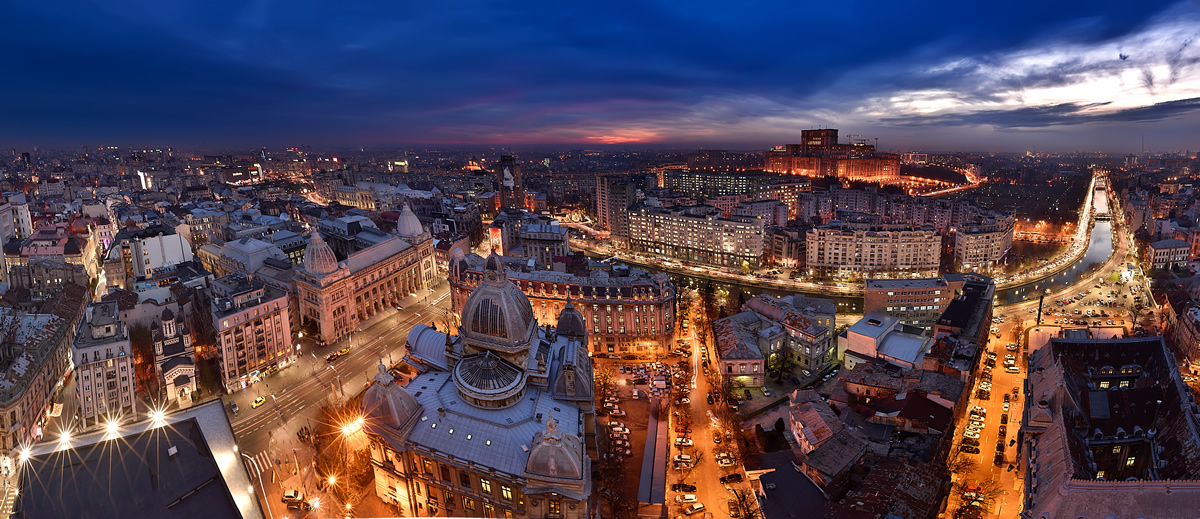
Sighisoara
Sighisoara is a city on the Tarnava Mare River, located in the historic region of Transylvania.
It is still considered as one of the most beautiful and best-preserved medieval towns in Europe. Designated as a World Heritage Site by UNESCO, it is known for nine towers, cobbled streets, burgher houses and ornate churches. It is also the birthplace of Vlad Dracula, also known as Vlad Tepes. Sighisoara’s main point of attraction is the Clock Tower, also known as the Council Tower, the Citadel and its quaint small square that lies at the heart of the citadel. This is where street markets, fairs, public executions and witch trials took place in the old days. Not far from the Clock Tower stands the Church of the Dominican Monastery, where you can admire some valuable artistic objects. One of the most representative gothic-style structures in Transylvania is definitely the Church on the Hill with its 500 year-old frescoes. Don’t forget to visit The Vlad Dracul House, located in the Citadel Square.
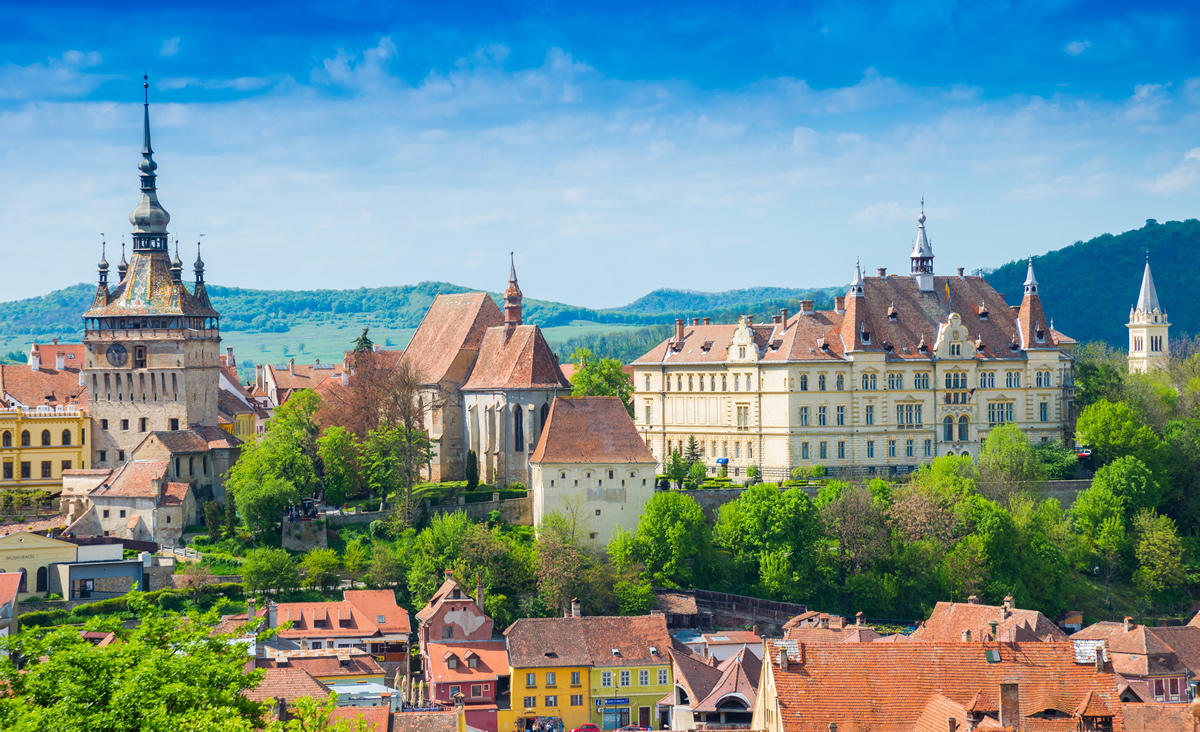
Brasov
Brasov is a city in the Transylvania region of Romania, fringed by the peaks of the Southern Carpathian Mountains.
It is one of the most visited places in Romania with gothic, baroque and renaissance architecture and a wealth of historical attractions. Piaţa Sfatului (Council Square) in the cobbled old town, surrounded by colorful baroque buildings and is home to the Casa Sfatului, a former town hall, today a local history museum. Founded by the Teutonic Knights in 1211 and settled by the Saxons as one of the seven walled citadels, Brasov has been used as backdrop in many recent period films. With the location at the intersection of trade routes linking the Ottoman Empire and western Europe, together with certain tax exemptions, Brasov had a strong political influence and wealth in the region. This was reflected in the city’s German name, Kronstadt, as well as in its Latin name, Corona, meaning Crown City. Stroll around the old Town Hall Square where you can admire colorfully painted and ornately trimmed baroque structures. Take a peek inside the Black Church, the largest gothic church in Romania and take a photo of one of the the narrowest streets in Europe – The Rope Street (between 111 and 135 cm wide).
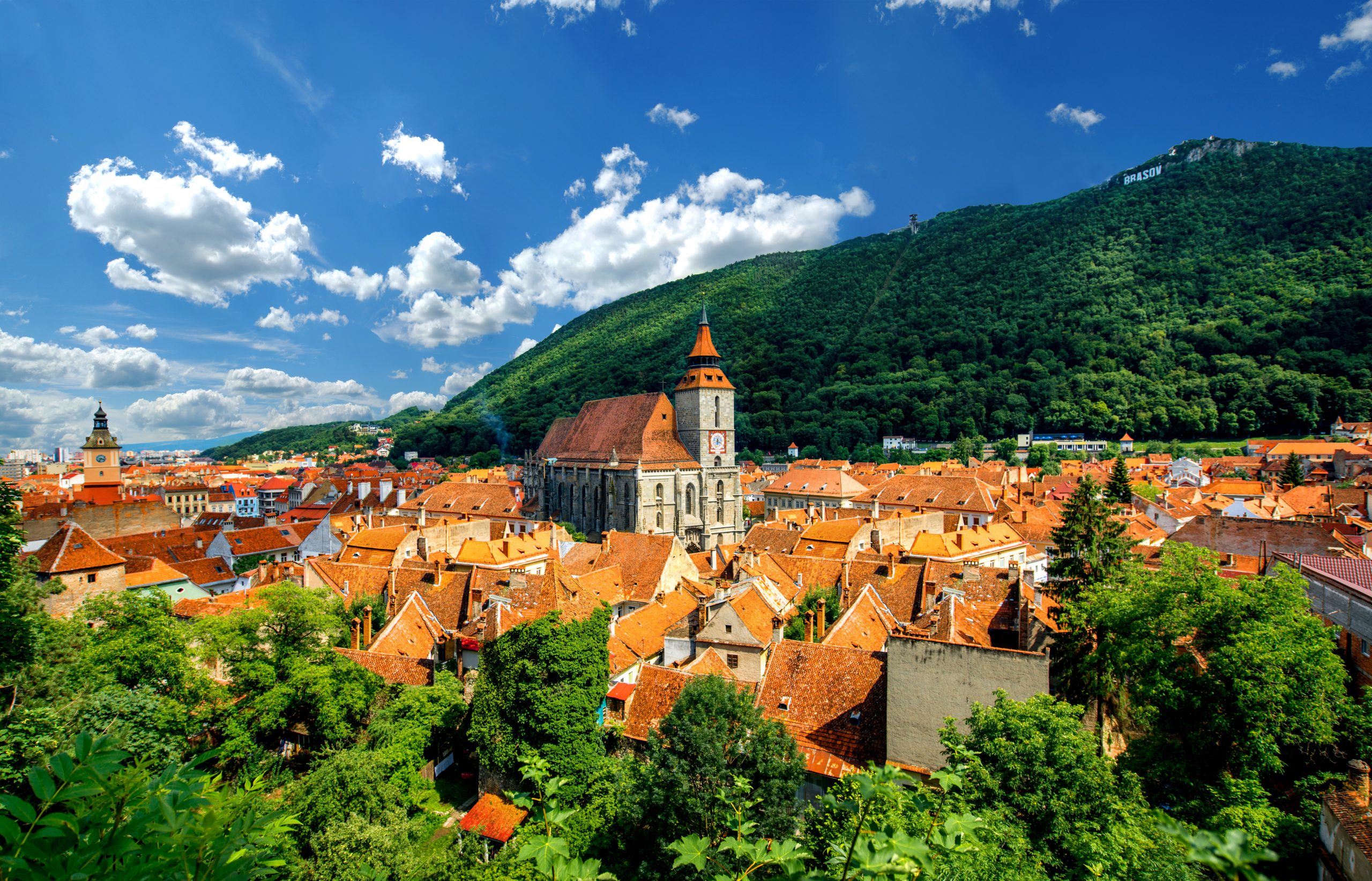
Sibiu
Sibiu is a city in Transylvania, central Romania, known for Germanic architecture in its old town, the legacy of 12th-century Saxon settlers.
As the largest and wealthiest of the seven walled citadels built in the 12th century, today, Sibiu is one of Romania’s cultural and tourism capitals. It is an attractive destination due to its wonderful medieval charm, excellent views of the surrounding landscapes and great food. Around the city are the remains of medieval walls and towers, including the 13th-century Council Tower. Some of the main attractions are the Brukenthal Palace, now the Brukenthal National Museum in the upper town and the nearby Evangelical Cathedral with gravestones in its walls. Sibiu’s Old Town retains the grandeur of its earlier days and sections of the medieval wall still guard the historic area. Narrow streets pass steep-roofed 17th century buildings before opening into vast, church-dominated squares such as Great Square and Little Square.
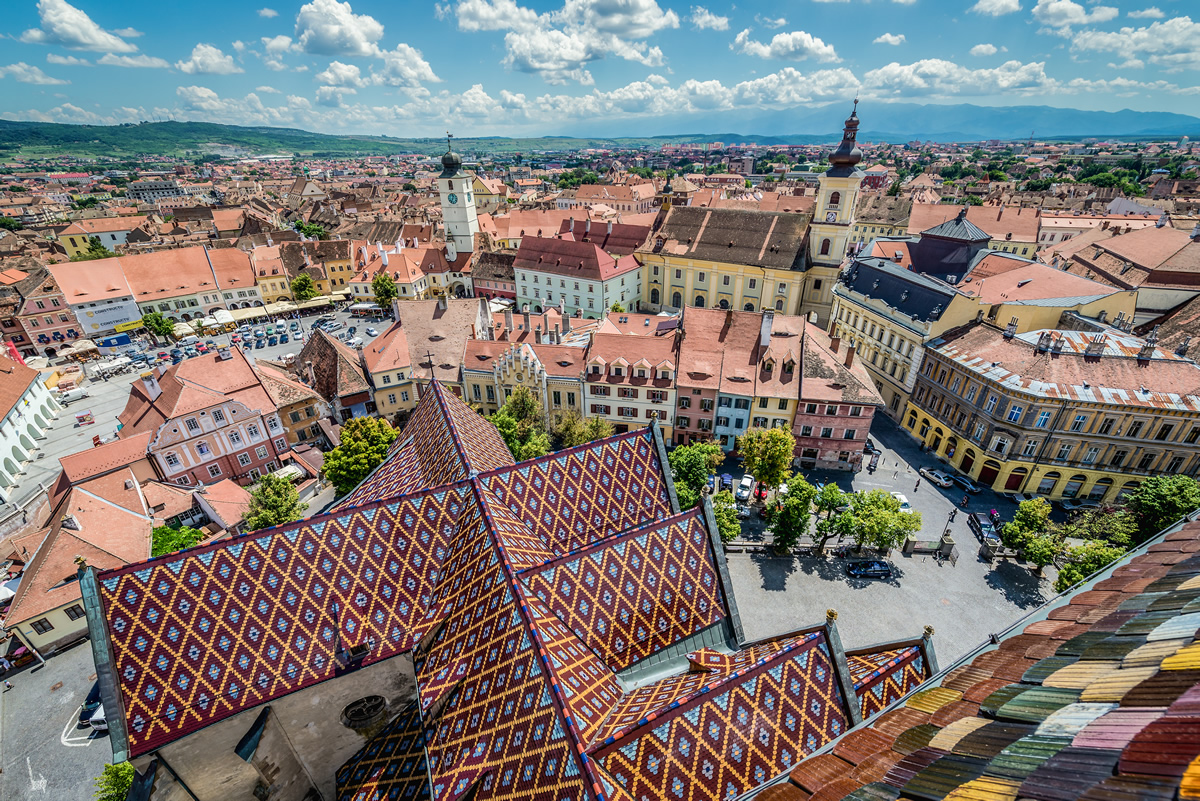
Monasteries of Bucovina
Monasteries dating mainly to the 15th and 16th century, a time when Orthodox Moldavia was battling with forces of the expanding Ottoman Empire are cherished not only for their beauty and quality of artisanship, but also for their endurance over the centuries and their cultural significance.
The Painted Monasteries of Bucovina with their painted exterior walls are decorated with 15th and 16th century frescoes featuring portraits of saints and prophets, scenes from the life of Jesus, images of angels and demons, and heaven and hell. Deemed masterpieces of Byzantine art, these churches are one-of-a-kind architectural sites in Europe.
The purpose of the frescoes was to bring the story of the Bible and the lives of the saints closer to villagers. Whether you are interested in religion, history, art or architecture, you will be intrigued and impressed by the composition, elegant outline and harmonious colors of these buildings. The best-preserved are the monasteries in Humor, Moldovita, Patrauti, Probota, Suceava, Sucevita, and Voronet. Seven of the churches were placed on UNESCO’s World Heritage list.
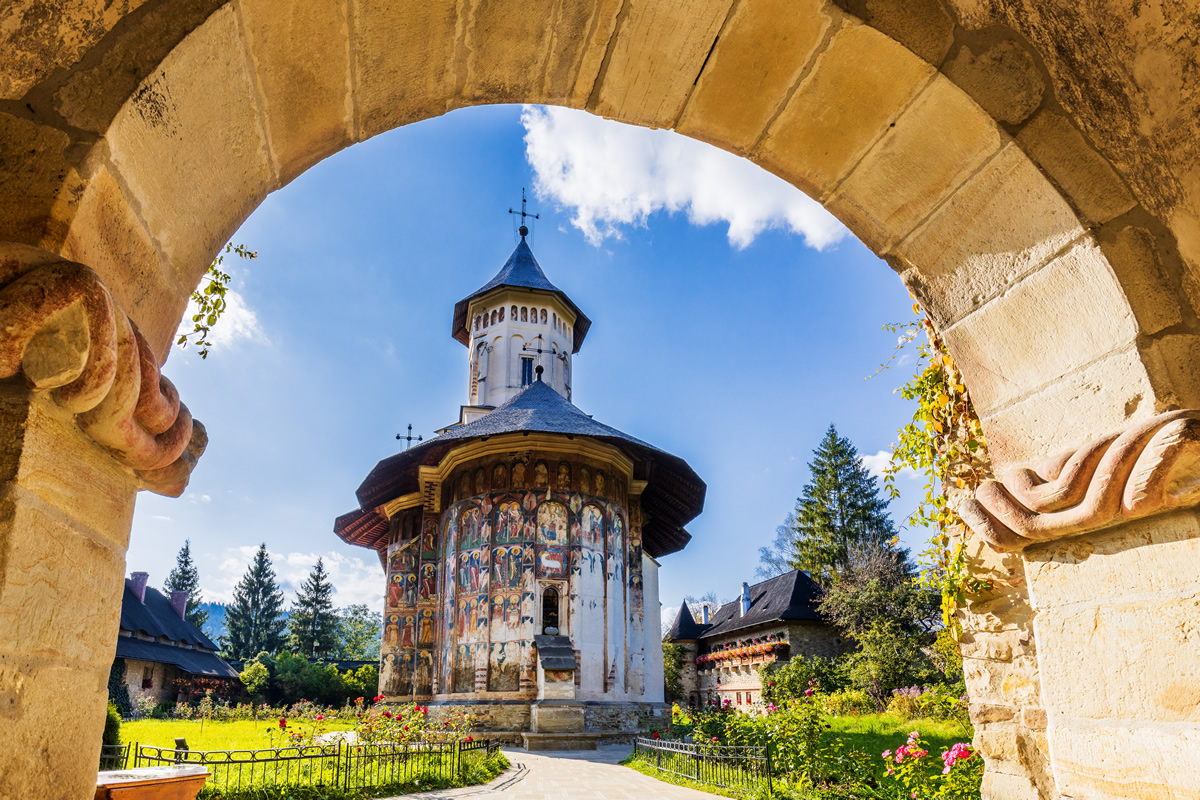
Send a request / Contact us
GDPR Consent*
All details provided by you will be held by Kompas d.o.o and used in accordance with our Privacy Notice. By clicking ‘SEND’ you consent to Kompas d.o.o companies contacting you regarding the requested offer and information about our products and services.
